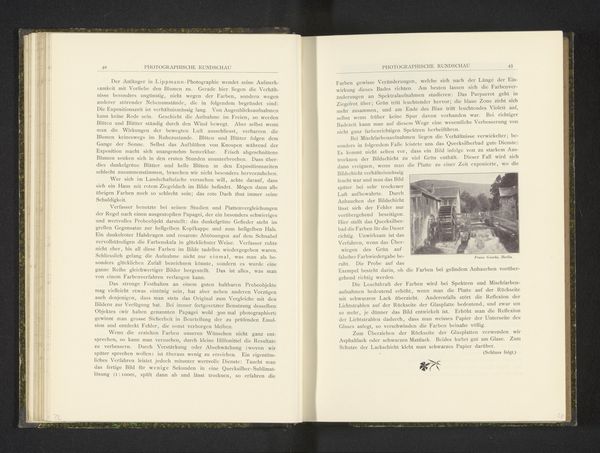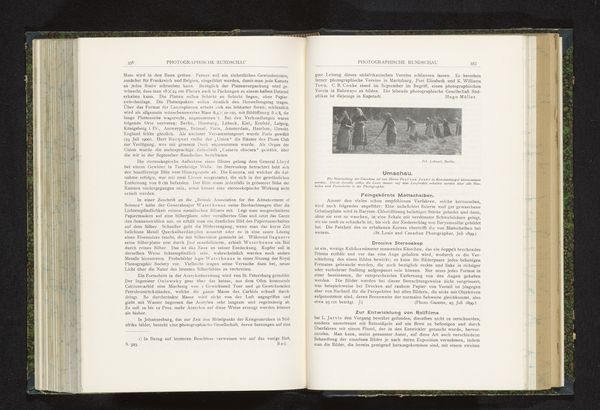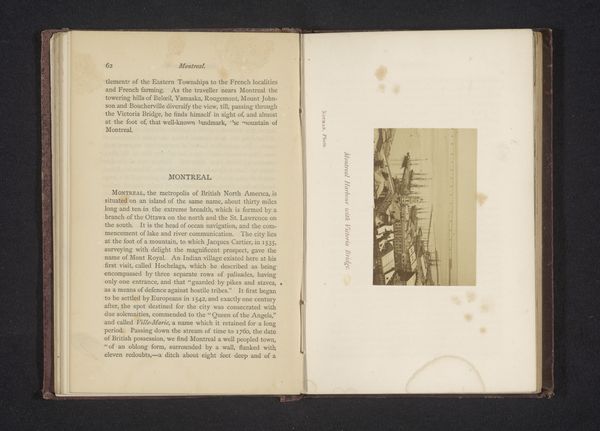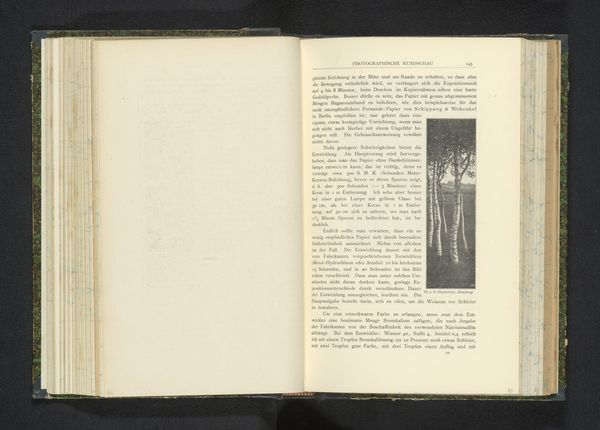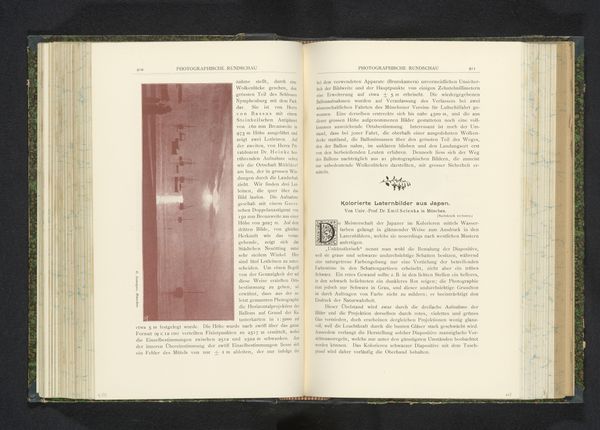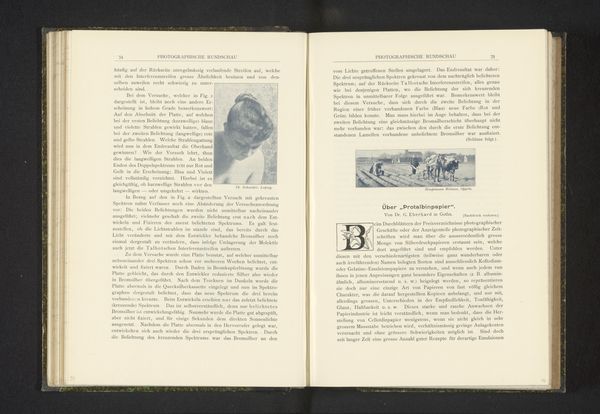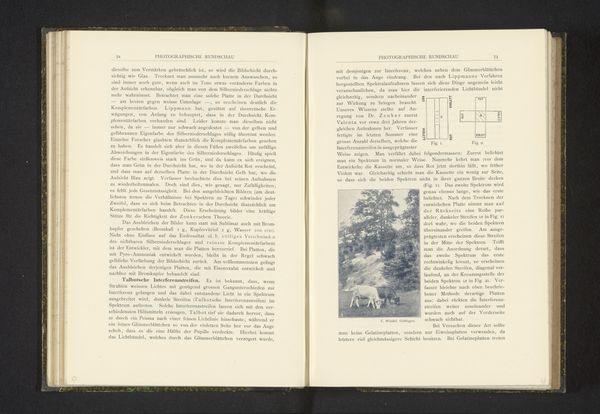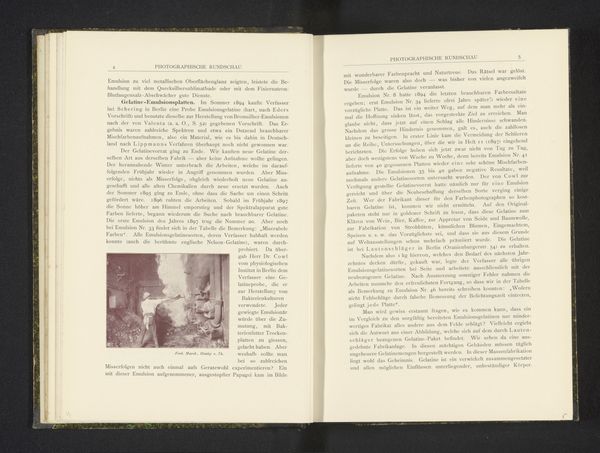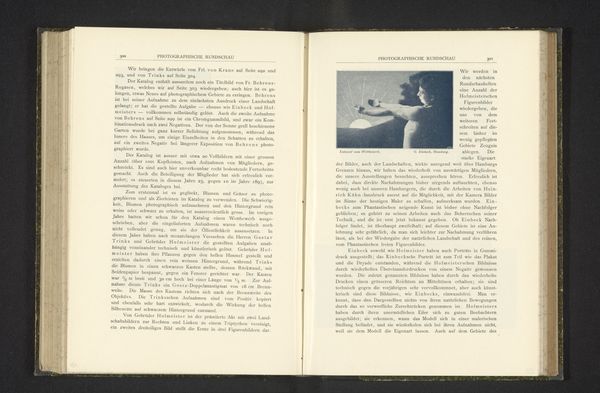
graphic-art, print, textile, photography, collotype
#
graphic-art
#
aged paper
#
art-nouveau
#
paper non-digital material
# print
#
landscape
#
textile
#
photography
#
collotype
Dimensions: height 119 mm, width 30 mm
Copyright: Rijks Museum: Open Domain
Curator: This fascinating volume, simply titled "Plant met bloemen," hails from before 1898. It features a striking collotype, a type of print, showcasing the artist's keen eye for detail. Editor: It feels very quiet, almost reverential, doesn't it? The floral image feels like it’s emerging from the aged paper itself. There's a real stillness to it. Curator: Yes, and I think that stillness is partly deliberate. Collotype as a photographic print process was embraced for its ability to reproduce tonal subtleties and fine detail, lending itself to a certain type of aesthetic promoted within artistic circles. Editor: Right, the level of detail achieved in the blossoms, they almost feel like portraits, each flower distinct, despite the constraints of what I assume must have been quite a laborious process. And it invites us to ponder themes like mortality, perhaps? Or resilience—seeing them somehow bloom from those book pages? Curator: The presentation here also matters. The flowers exist within a broader compendium or survey. Publications like this played an important role in establishing the photographic arts among wider publics. Editor: And these aren’t like splashy full-color plates—the aesthetic aligns so well with those fin-de-siecle sentiments of quiet observation and refinement. But beyond that socio-historical context, what persists with the plant image, here? Curator: The print offered a certain claim to permanence—art historians continue referencing these objects after well over a century! Editor: So, we’re returning again and again, finding new meanings in these pages, after all. Curator: Exactly. Context keeps shifting; interpretations continue. It's one purpose of our institutions. Editor: Beautifully said. Perhaps this simple "Plant met bloemen" offers a good prompt to observe something beautiful.
Comments
No comments
Be the first to comment and join the conversation on the ultimate creative platform.
